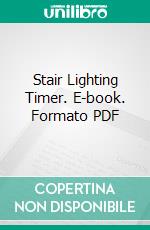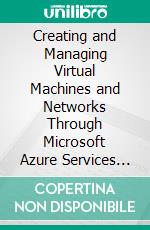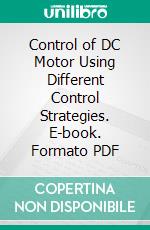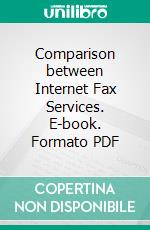Optimal Control Schemes for Power System with Unified Power Flow Controller (UPFC). E-book. Formato PDF - 9791220279635
di Dr. Hidaia Mahmood Alassouli
edito da DR. HIDAIA MAHMOOD ALASSOULI , 2021
Formato: PDF - Protezione: nessuna
In transmission area, application of power electronics consists of High Voltage Direct Current (HVDC) power transmission and FACTS. HVDC is often an economical way to interconnect certain power systems, which are suited in different regions separated by long distances or those have different frequencies or incompatible frequency control. HVDC involves conversion of ac to dc at one end and conversion of dc to ac at the other end.
What is most interesting for transmission planners is that FACTS opens up new opportunities for controlling power and enhancing the usable capacity of the lines. The possibility that current through a line can be controlled at reasonable cost enables a large potential of increasing the capacity of the existing lines with larger conductors, and use one of the FACTS controllers to enable corresponding power to flow through lines under normal and contingency conditions. These opportunities arise through the ability of FACTS controllers to control the interrelated parameters that govern the operation of transmission line including series impedance, shunt impedance, current, voltage, phase angle, and the damping of oscillations at various frequencies below the rated frequency.
In distribution area, an exciting opportunity called Custom Power. The custom power concept incorporates power electronics controllers and switching equipment, one or more of which can be used to provide a value-added service to the customers. In general, these custom service applications represent power electronics in the range of few tens of kilowatts to few ten of megawatts of conversion or switching equipment between the utility supply and customer.
On the end-user side, power electronics conversion and switching technology has been fast growing area. Complementing the Custom Power technology is the whole area of power conditioning technology used by customers, under the term Power Quality. Uninterruptible power supplies (UPS) and voltage regulators represent the major growth area in power electronics. In end use, the converter sizes range from a few watts to ten of megawatts.
The term active filter is a general one and is applied to a group of power electronic circuits incorporating power switching devices and passive energy storage circuit elements such as inductors and capacitors. The functions of these circuits vary depending on the applications. They are generally used for controlling current harmonics in supply networks at the low and medium voltage distribution level or for reactive power and/or voltage control at high voltage distribution level. These functions may be combined in a single circuit or in separate active filters.
Most of the control schemes introduced in the existing papers were designed either for eliminating current harmonics or eliminating voltage flickers or for load flow control. So, this work is devoted to find a proper optimal control schemes for a system with series or shunt or series and shunt converters that can provide all functions together.
Various optimal control schemes will be designed for systems with series, shunt and series-shunt converters with the objective to control the load flow through a lines and to eliminate current harmonics and voltage flickers with different strategies for tracking.
What is most interesting for transmission planners is that FACTS opens up new opportunities for controlling power and enhancing the usable capacity of the lines. The possibility that current through a line can be controlled at reasonable cost enables a large potential of increasing the capacity of the existing lines with larger conductors, and use one of the FACTS controllers to enable corresponding power to flow through lines under normal and contingency conditions. These opportunities arise through the ability of FACTS controllers to control the interrelated parameters that govern the operation of transmission line including series impedance, shunt impedance, current, voltage, phase angle, and the damping of oscillations at various frequencies below the rated frequency.
In distribution area, an exciting opportunity called Custom Power. The custom power concept incorporates power electronics controllers and switching equipment, one or more of which can be used to provide a value-added service to the customers. In general, these custom service applications represent power electronics in the range of few tens of kilowatts to few ten of megawatts of conversion or switching equipment between the utility supply and customer.
On the end-user side, power electronics conversion and switching technology has been fast growing area. Complementing the Custom Power technology is the whole area of power conditioning technology used by customers, under the term Power Quality. Uninterruptible power supplies (UPS) and voltage regulators represent the major growth area in power electronics. In end use, the converter sizes range from a few watts to ten of megawatts.
The term active filter is a general one and is applied to a group of power electronic circuits incorporating power switching devices and passive energy storage circuit elements such as inductors and capacitors. The functions of these circuits vary depending on the applications. They are generally used for controlling current harmonics in supply networks at the low and medium voltage distribution level or for reactive power and/or voltage control at high voltage distribution level. These functions may be combined in a single circuit or in separate active filters.
Most of the control schemes introduced in the existing papers were designed either for eliminating current harmonics or eliminating voltage flickers or for load flow control. So, this work is devoted to find a proper optimal control schemes for a system with series or shunt or series and shunt converters that can provide all functions together.
Various optimal control schemes will be designed for systems with series, shunt and series-shunt converters with the objective to control the load flow through a lines and to eliminate current harmonics and voltage flickers with different strategies for tracking.
- Part 1: Gives the description of optimal control design.
- Part 2: Case studies to design different optimal control schemes for system with UPFC unit to control the power flow, eliminate voltage flicker and eliminate current harmonics. The case studies were repeated for system with only series or shunt converters.
Ean
9791220279635
Titolo
Optimal Control Schemes for Power System with Unified Power Flow Controller (UPFC). E-book. Formato PDF
Autore
Editore
Data Pubblicazione
2021
Formato
PDF
Protezione
nessuna
Punti Accumulabili








